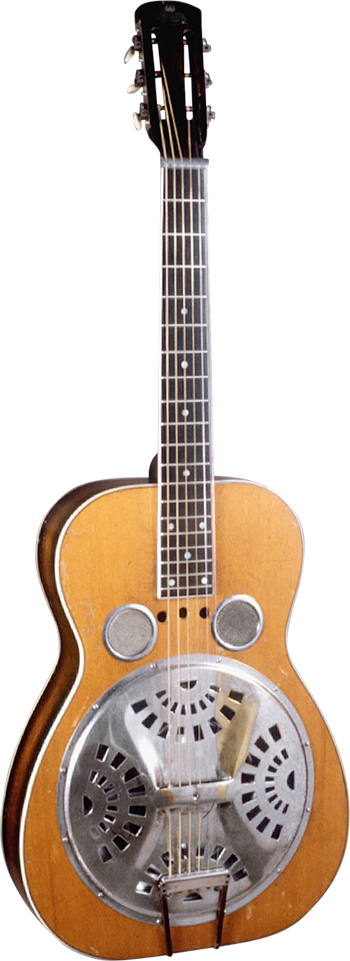
Regal Guitar Serial Numbers
More Than You Really Wanted To Know About the Dobro By Ken Brown April 11, 1995 INTRODUCTION: The Dobro as a Misunderstood Stepchild The sixth member of the bluegrass family of instruments (the orphan child that Bill Monroe still refuses to recognize) and the only one invented in America, the dobro is still the least understood. Comments like 'Wow! Lookit the action on them strings!'
I recently purchased this Regal Esquire guitar from Michael Ricciarelli of North Branch Instruments, LLC of Montpelier, VT. Ricciarelli is a repair technician, and he recently completed an apprenticeship with Pete Langdell of Rigel mandolins, who owned the guitar before him.
Or basic questions like 'Say, how do you tune that thing, anyway?' Indicate the average picker or onlooker doesn't know much about the dobro. And it never fails to surprise me when I find that even seasoned bluegrass veterans (and I'm talking here about folks who have won banjo contests, played in for decades in the top amateur bands, and have worked in the recording studio) don't know very much at all about the dobro, unless they happen to play one (questions like 'Hey!
What's that thing?' Are an immediate tip-off). This essay on dobrology will, I hope, fill in some of those knowledge gaps, but most of all may help you, as banjo, guitar, mandolin, bass, or fiddlepickers to interact with those of us who, as Waldo Otto of the Trailblazers likes to say, 'have a metal block.'
And at the end of this essay you'll find a list of recommended readings. Much of this essay is based on those sources, and the rest is based a personal viewpoint that comes from 15 years of opinionated dobro picking. Here we'll discuss such matters as dobro serial numbers, the value of pre-war dobros, how the thing works (ie., a look at the intestines of the dobro), tuning, and proper miking. HISTORY OF THE DOBRO: This Section Not for the Faint of Heart The history of the dobro is a labyrinthine nightmare, one that is only sketchily documented and based on sometimes contradictory sources.
Personally, I wish both you and I could skip this section and go on to the next, but I've got to stick with it. The only undisputed fact seems to be that the dobro was NOT invented by French Canadian fur trappers. Principles of forensic toxicology 3rd edition barry levine pdf.
As far as I'm concerned, the most definitive source is Wheeler (1990), specifically the chapters on National, Dobro, Valco, Regal, and Mosrite, but other details can be found in King (1991) and Gear (1978). The details given below may seem to be of little intrinsic interest, but they show why it is often impossible to tell how old a given instrument might be. Almost everyone knows that the dobro was developed by the Dopyera brothers (who later Americanized the spelling to 'Dopera'), Czechoslovakian immigrants who came to America in 1908, and that Dobro is an anagram formed from 'DO pyera BRO thers.'
All five of the brothers, John, Robert, Rudolph, Louis, and Emil were involved to some extent, though John, Rudy, and Ed (Emil) were most involved in production. But when was the dobro invented? Was it 1928, as some histories say, or 1929, or was it in 1926 or 1925 as other sources imply?
To answer that, we must be more specific. The bluegrass dobro as we know it (woodbodied, with a single resonator, 8-legged aluminum spider, and raised nut) apparently was first produced in 1928. According to King (1991:18) it was invented in the summer of 1928 and offered for sale later that same year (although on the same page there is reprinted an article from Guitar Player magazine giving the date as the spring of 1929 - see what I mean?).
Two patents for this kind of instrument were filed by Rudy Dopyera on June 29, 1929, and February 1, 1932, and awarded in 1932 and 1933, respectively. The instrument pictured in the drawings for the second patent (see King 1991:19) is the bluegrass dobro as we know it. King (1991:18) says that dobros produced before the patents were issued have 'Pat. Stamped on the coverplate. But if we delve into the history a little further, it gets more complex. The first resonator guitar was not the single-cone woodenbodied bluegrass instrument that we are familiar with, but the tri-cone National guitar. This instrument had three small metal cones arranged in a triangular pattern, joined by a three-legged bridge, carried in a metal body, and this is the familiar blues dobro, still played in slide guitar style by musicians like Steve James, of San Antonio.